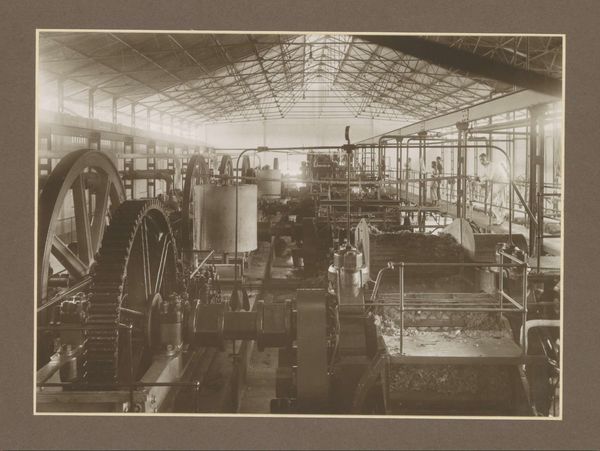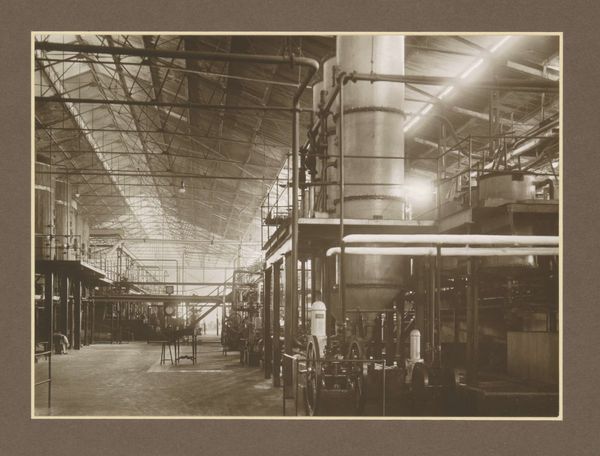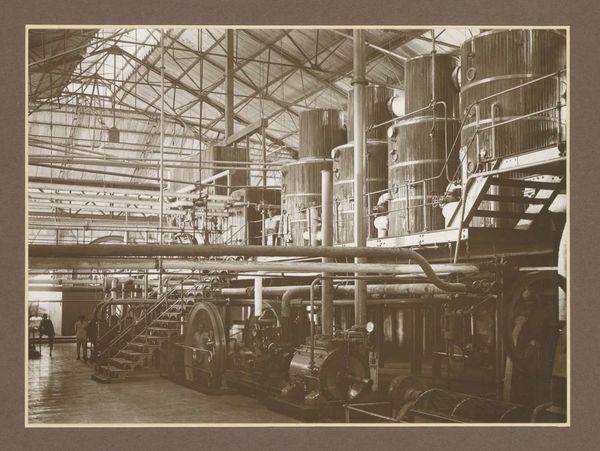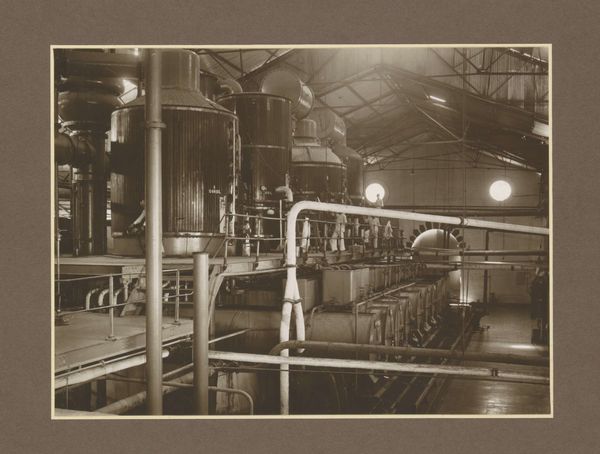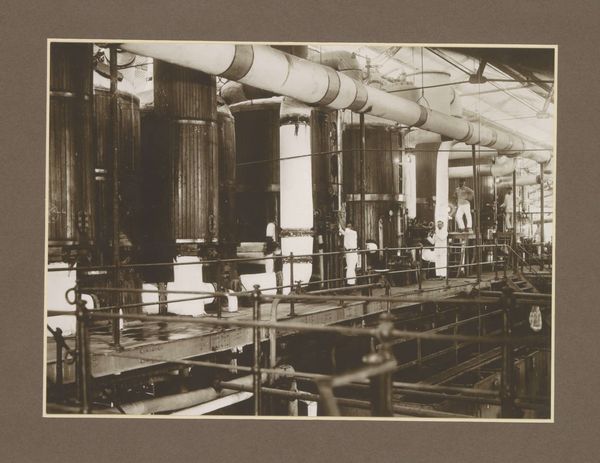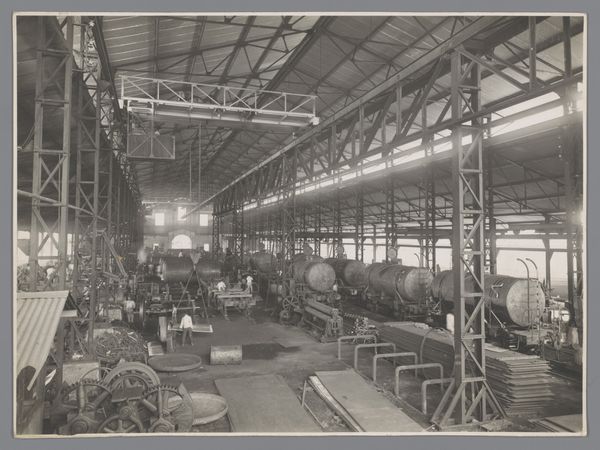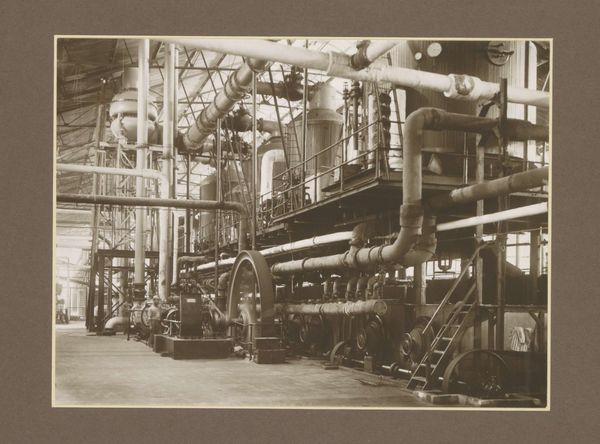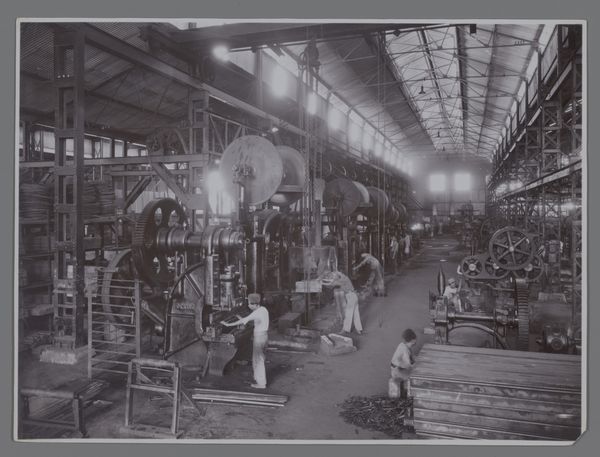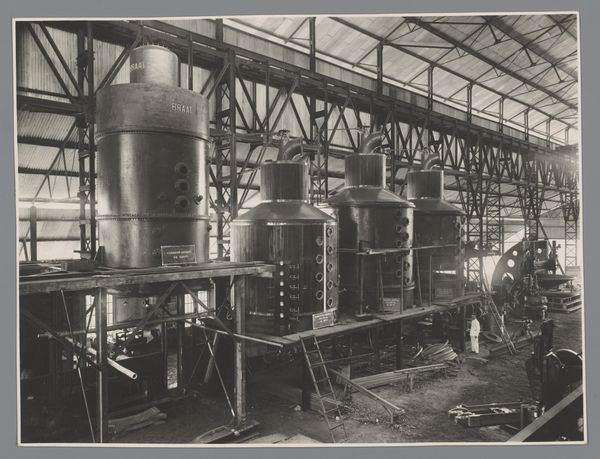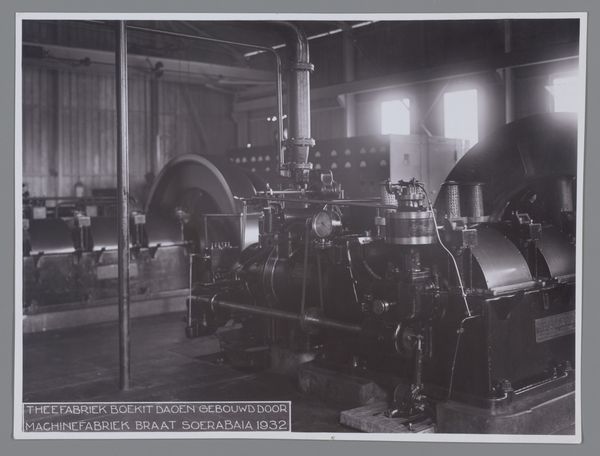
photography
#
asian-art
#
photography
#
realism
Dimensions: height 297 mm, width 450 mm
Copyright: Rijks Museum: Open Domain
Editor: This is a photograph titled "Hal met machines van suikerfabriek Ngandjoek op Java," taken sometime between 1925 and 1930 by Isken. It shows the interior of a sugar factory, focusing on the machinery. It feels very stark and industrial. What do you see in this piece beyond the obvious factory scene? Curator: I see a complex layering of colonial exploitation, industrial progress, and the invisibility of labor. The photograph aestheticizes this modern factory space, perhaps even celebrating it, but what about the people who worked there? Where are the Javanese laborers in this image of their homeland's industry? Editor: So, you're saying it's not just a neutral documentation of a factory, but a statement about colonial power? Curator: Precisely. The photograph becomes a symbol of Dutch colonial infrastructure imposed on Java. Think about what a sugar factory represents: the extraction of resources and wealth from the land and its people. By focusing solely on the machinery, Isken silences the human element, reinforcing a power dynamic. Who benefits from this industrialization? Whose stories are not being told? Editor: That's a perspective I hadn't considered. I was caught up in the composition and details of the machinery. Now, I see it's loaded with socio-political implications. Curator: Consider also the concept of visibility and invisibility. The impressive machinery is prominently displayed, while the labor that drives it remains hidden. This visual choice perpetuates a narrative that favors the colonizer's perspective, effectively erasing the indigenous population's contribution and lived experience. What questions does that bring up for you? Editor: It makes me think about whose gaze this photograph was intended for, and what narratives it reinforced at the time. It definitely encourages a deeper analysis of seemingly straightforward documentary images. Curator: Exactly! It serves as a potent reminder to critically examine not only what we see, but also what is intentionally left out.
Comments
No comments
Be the first to comment and join the conversation on the ultimate creative platform.
